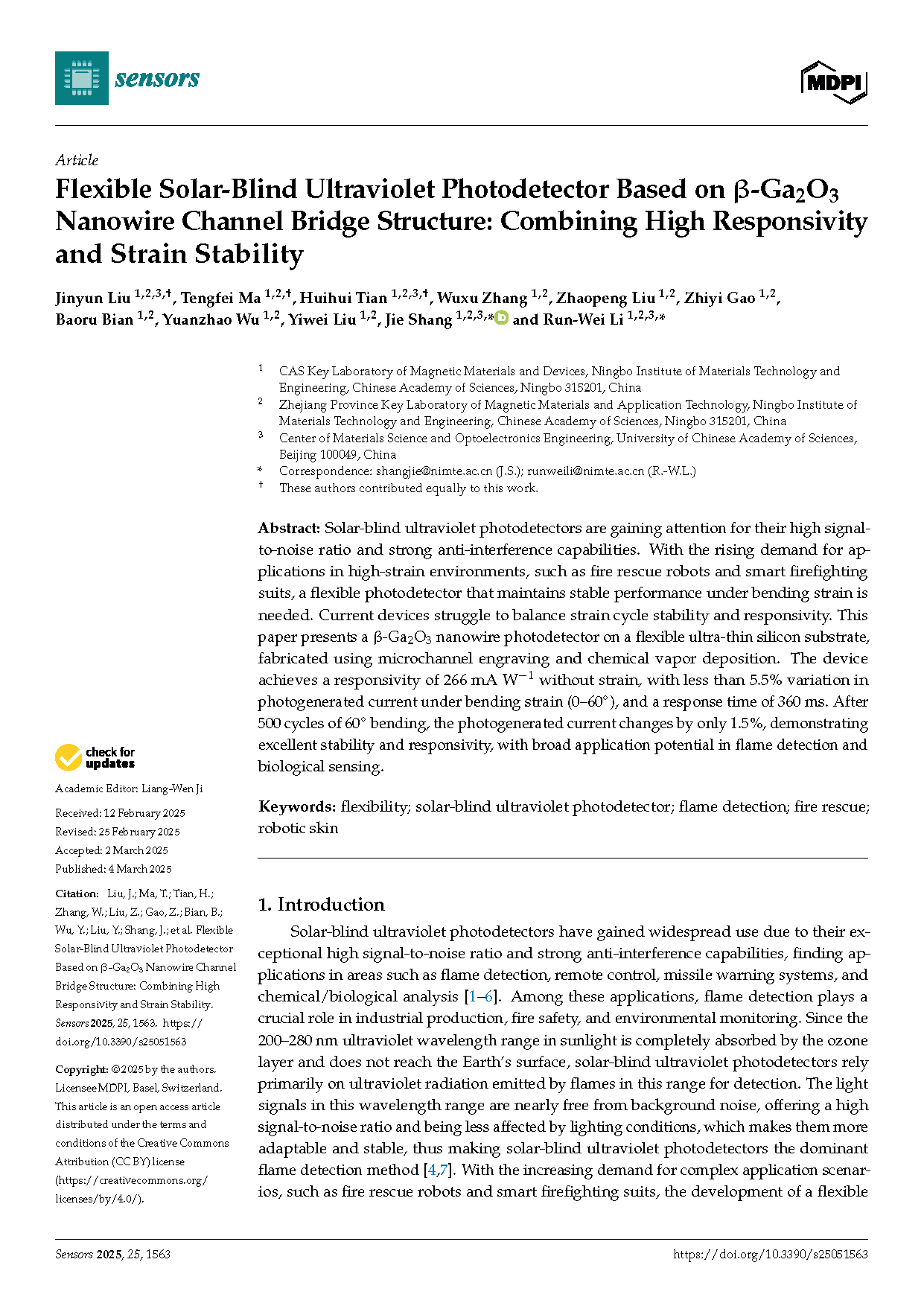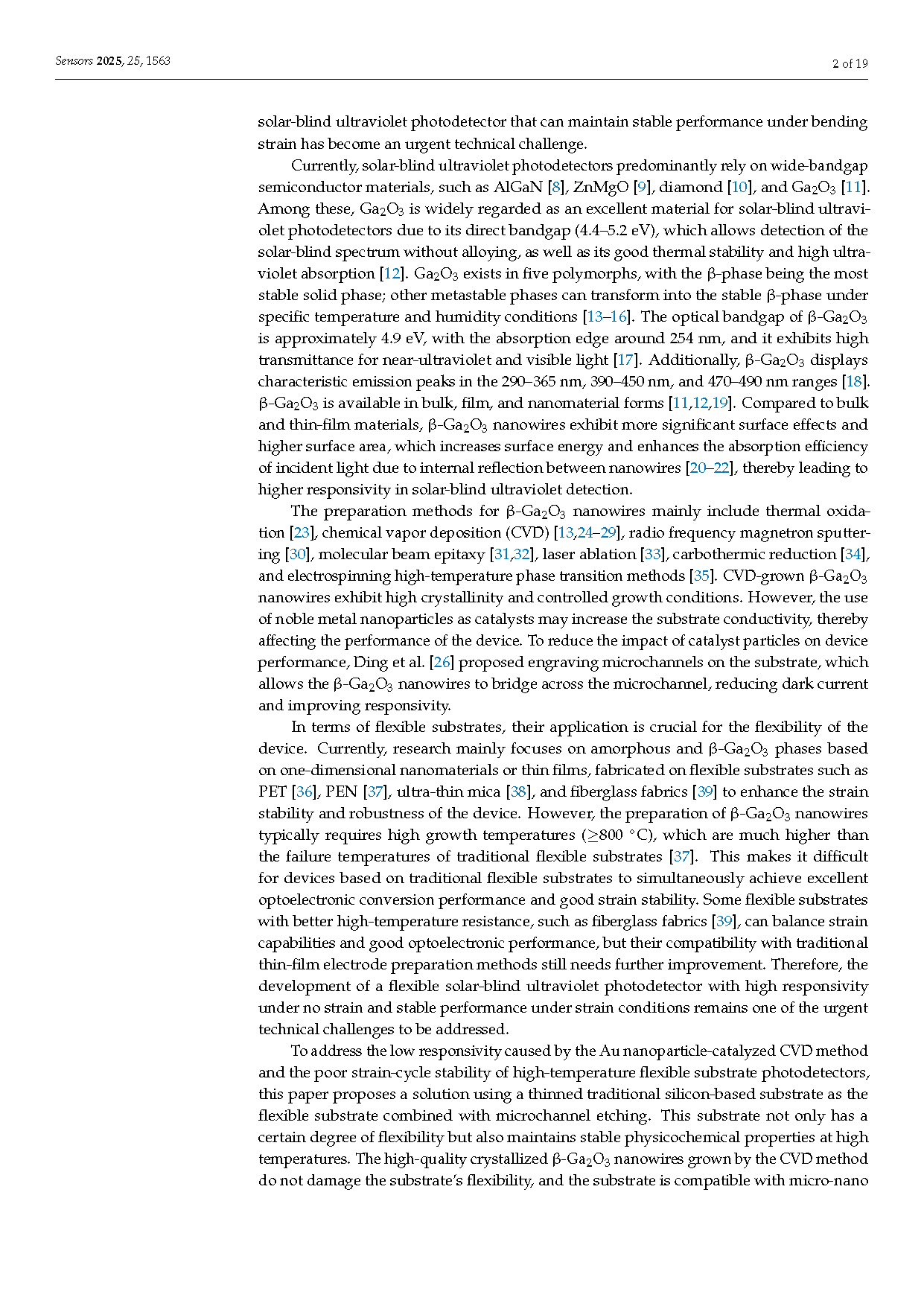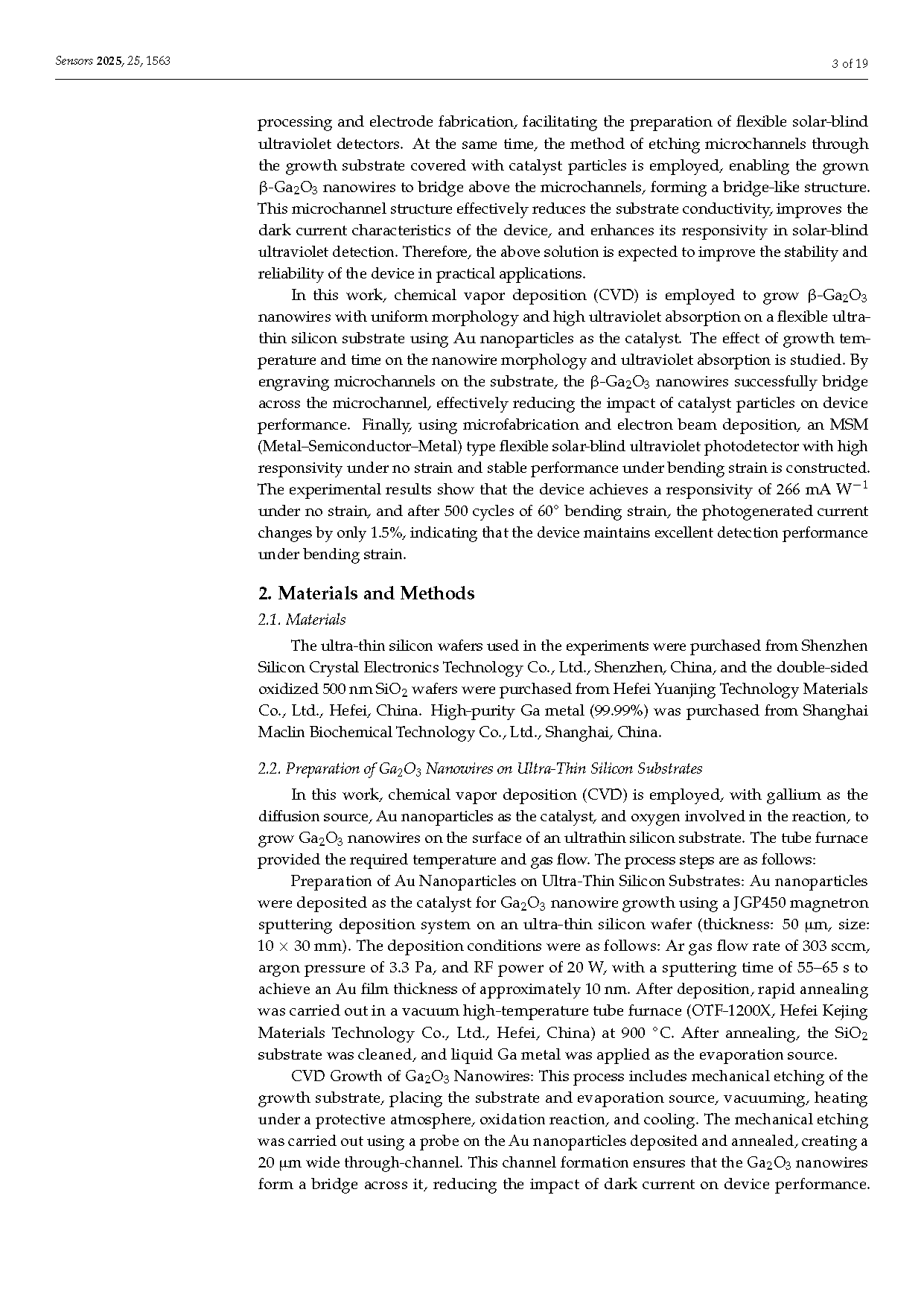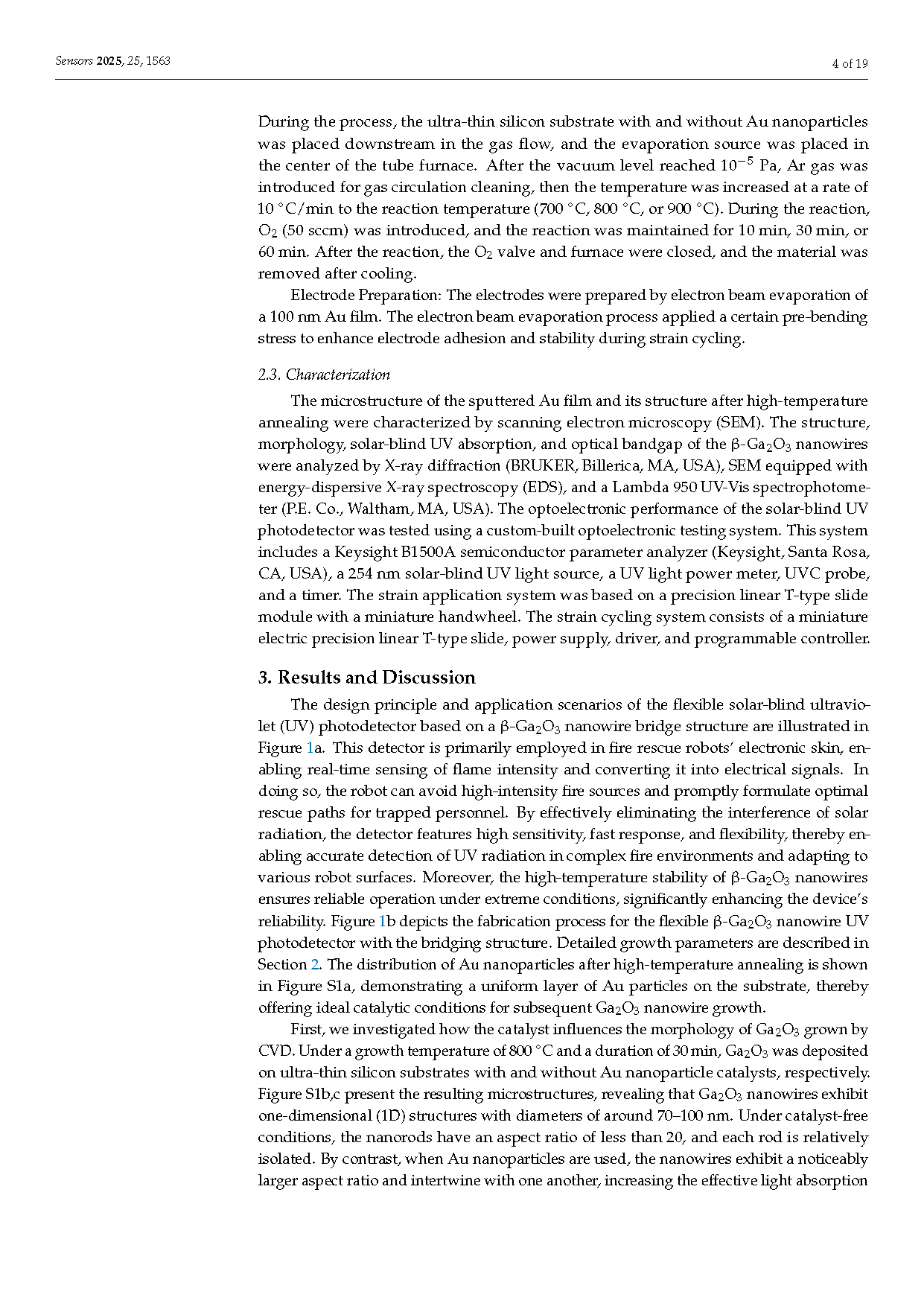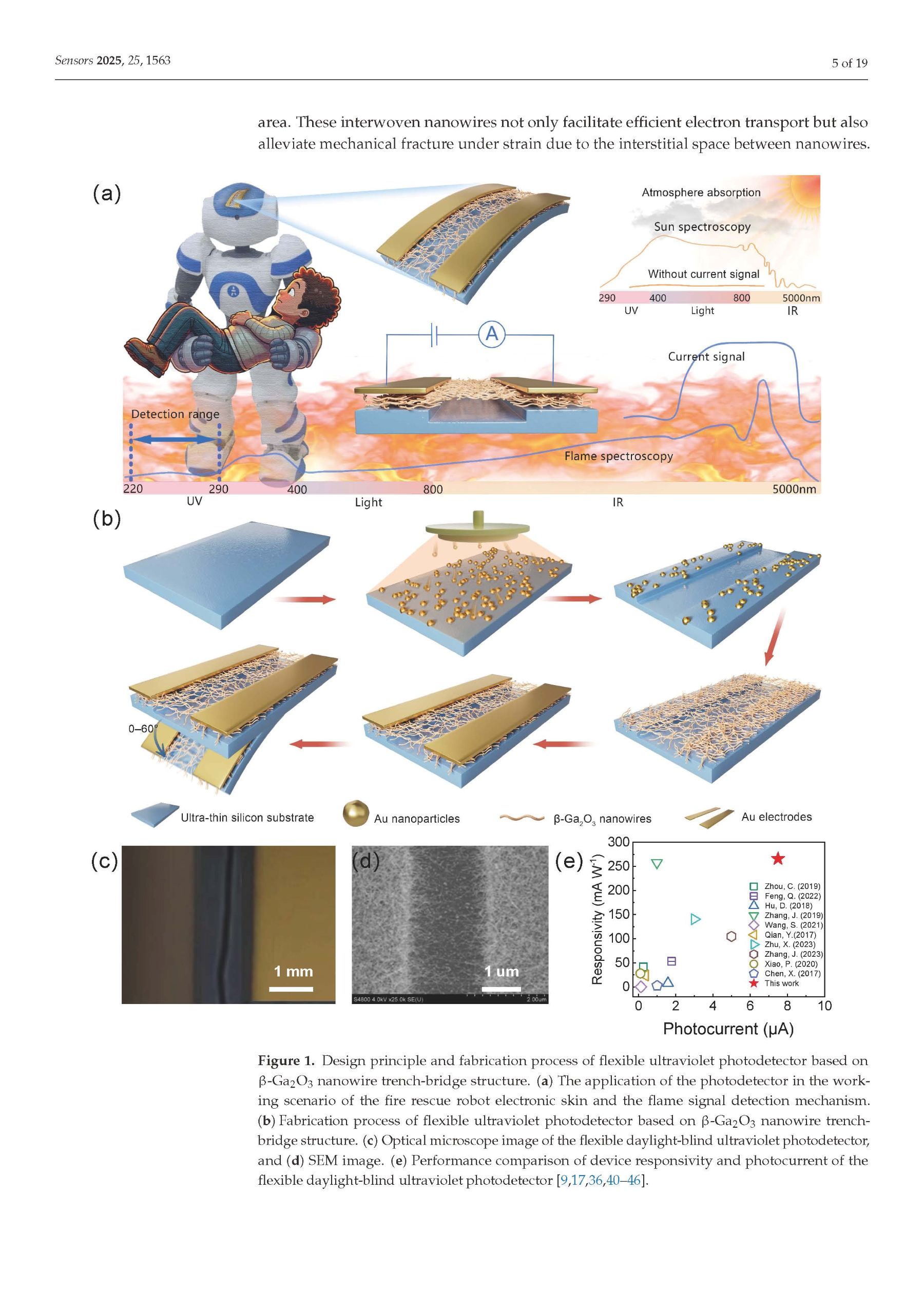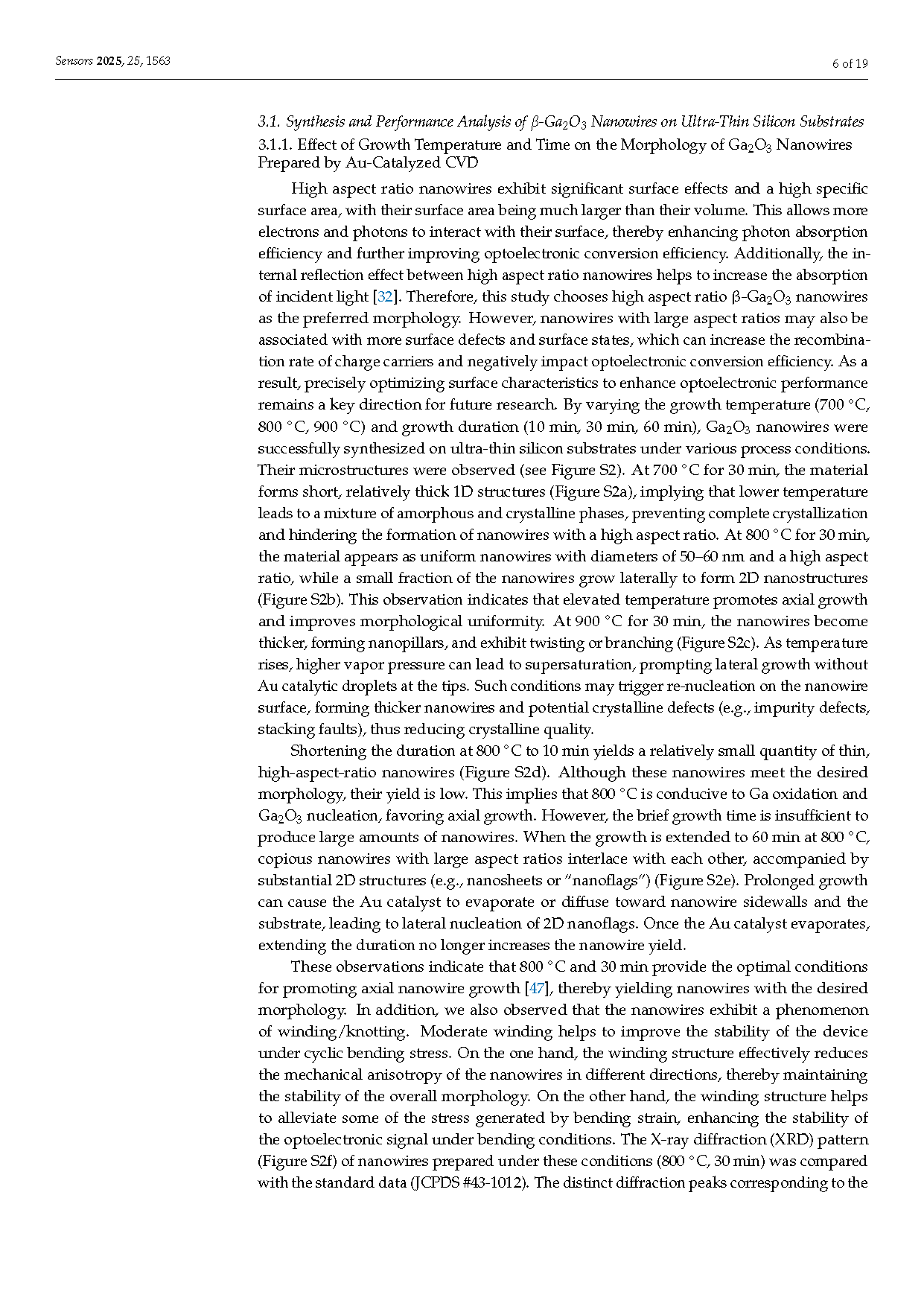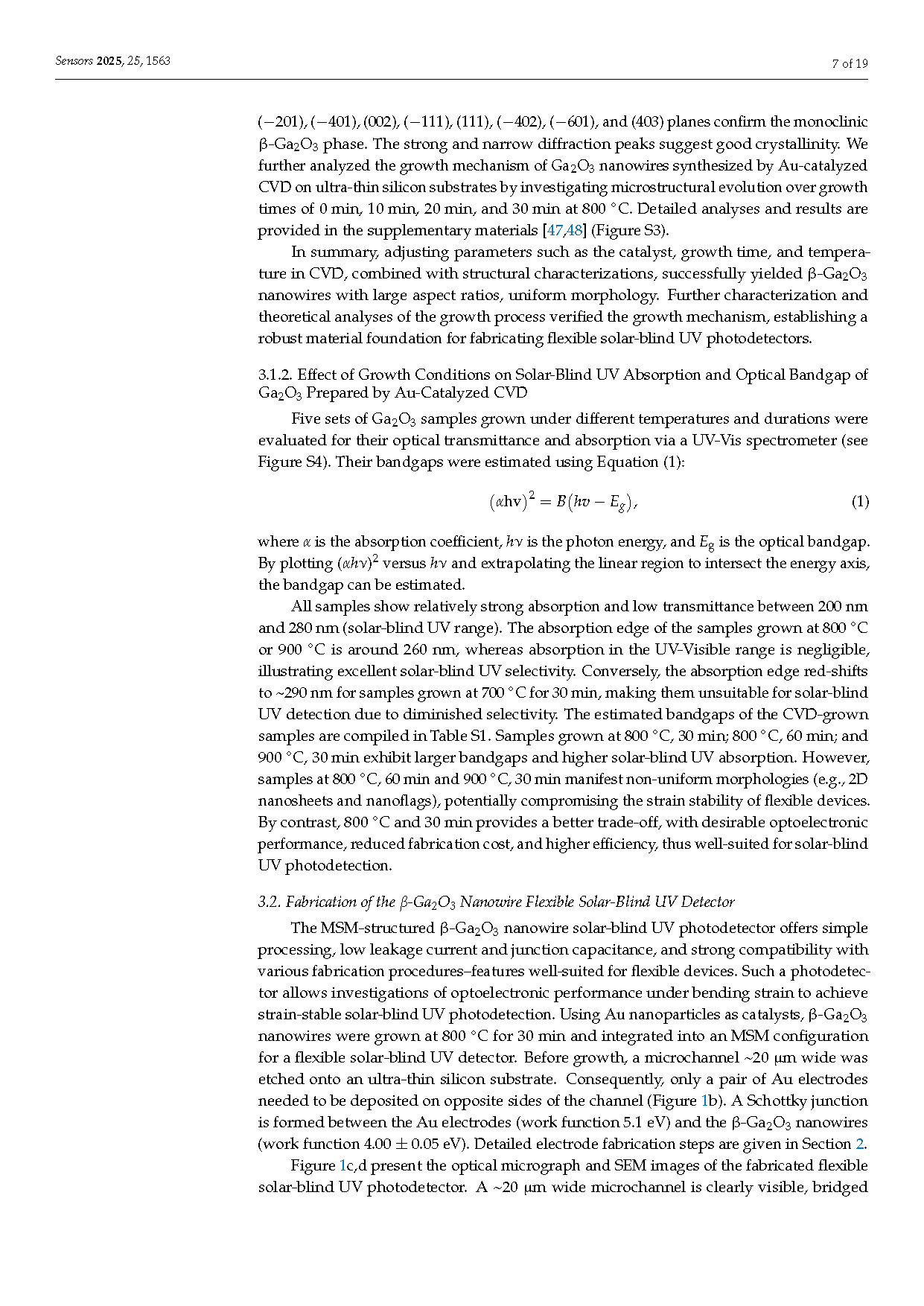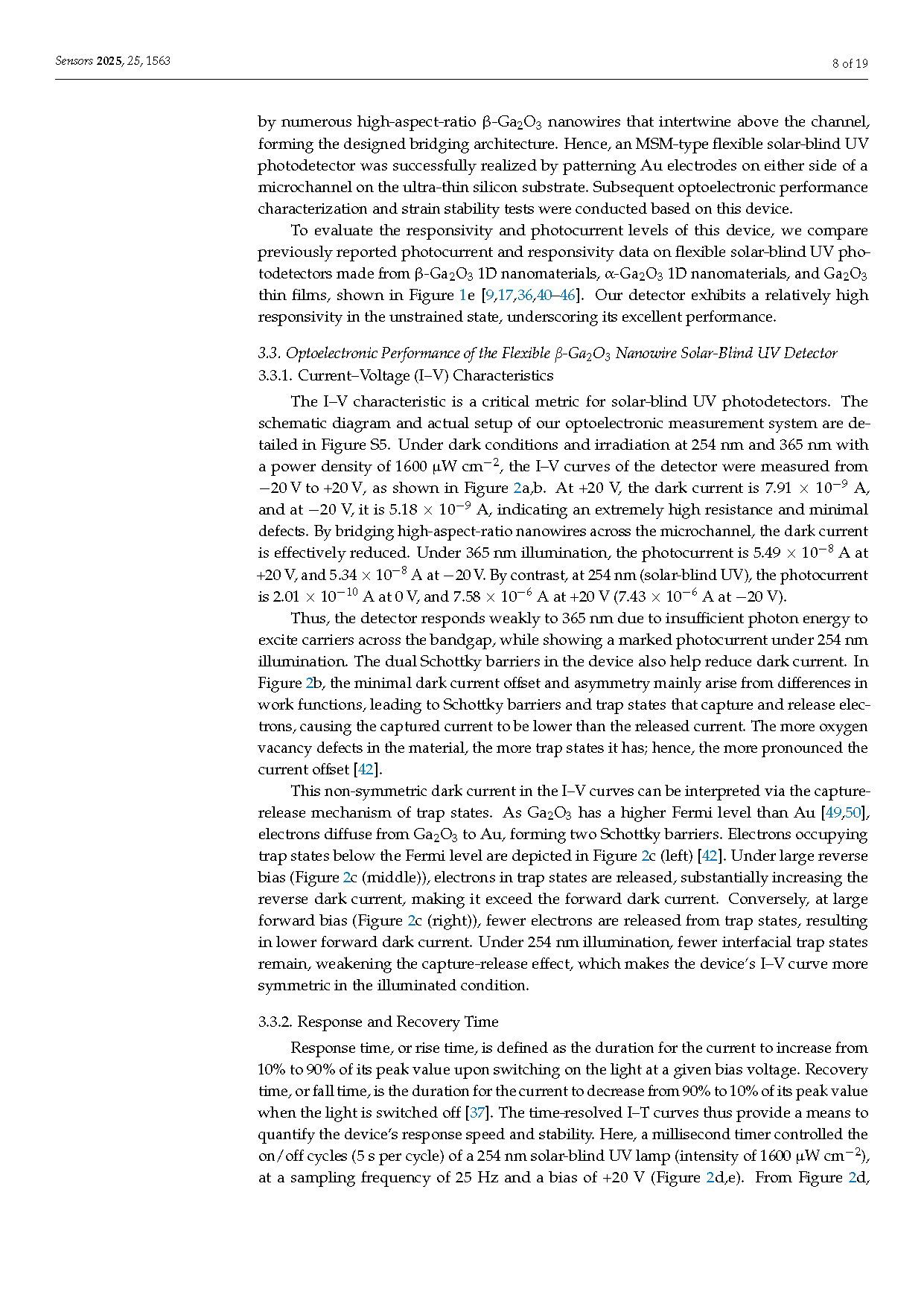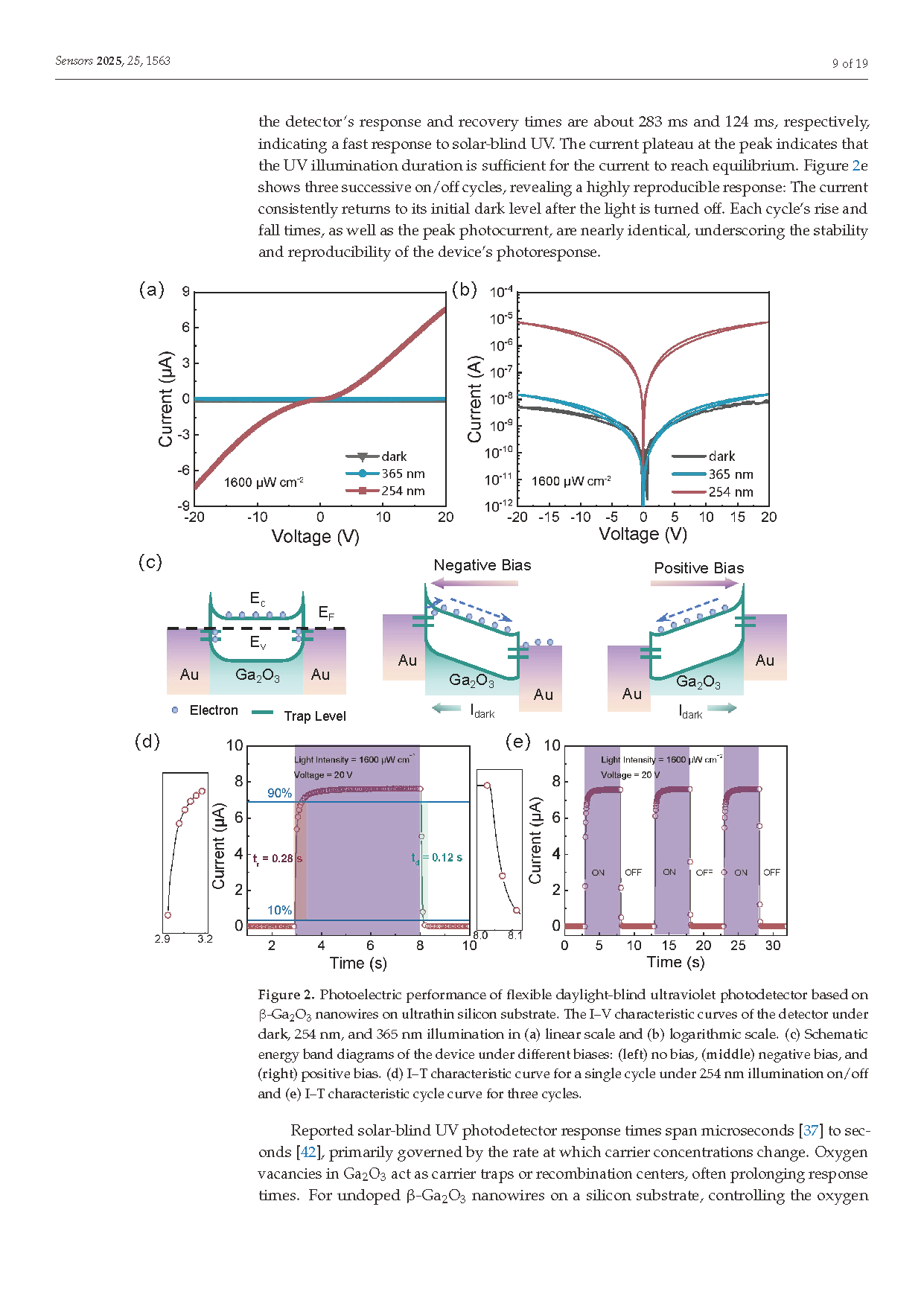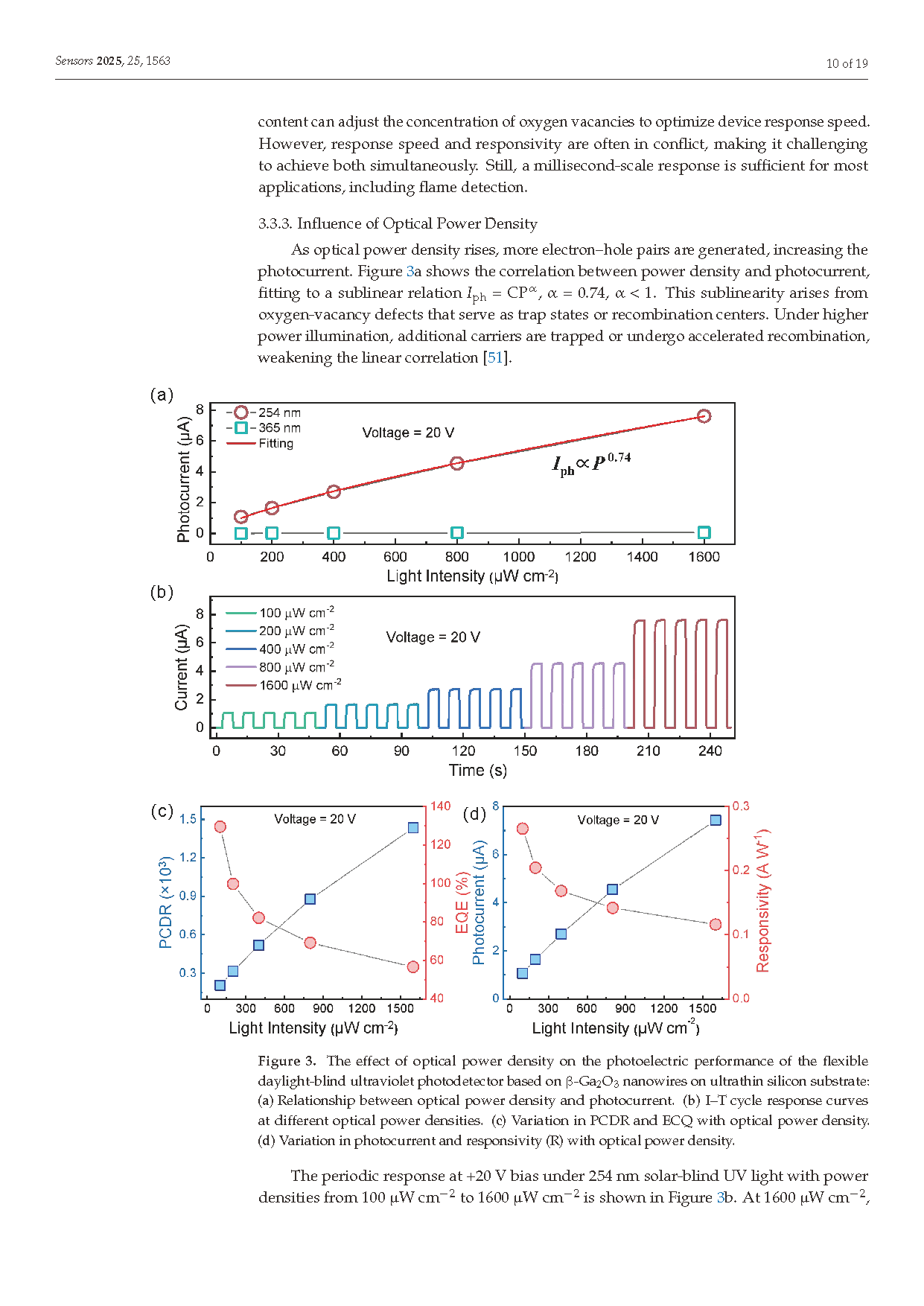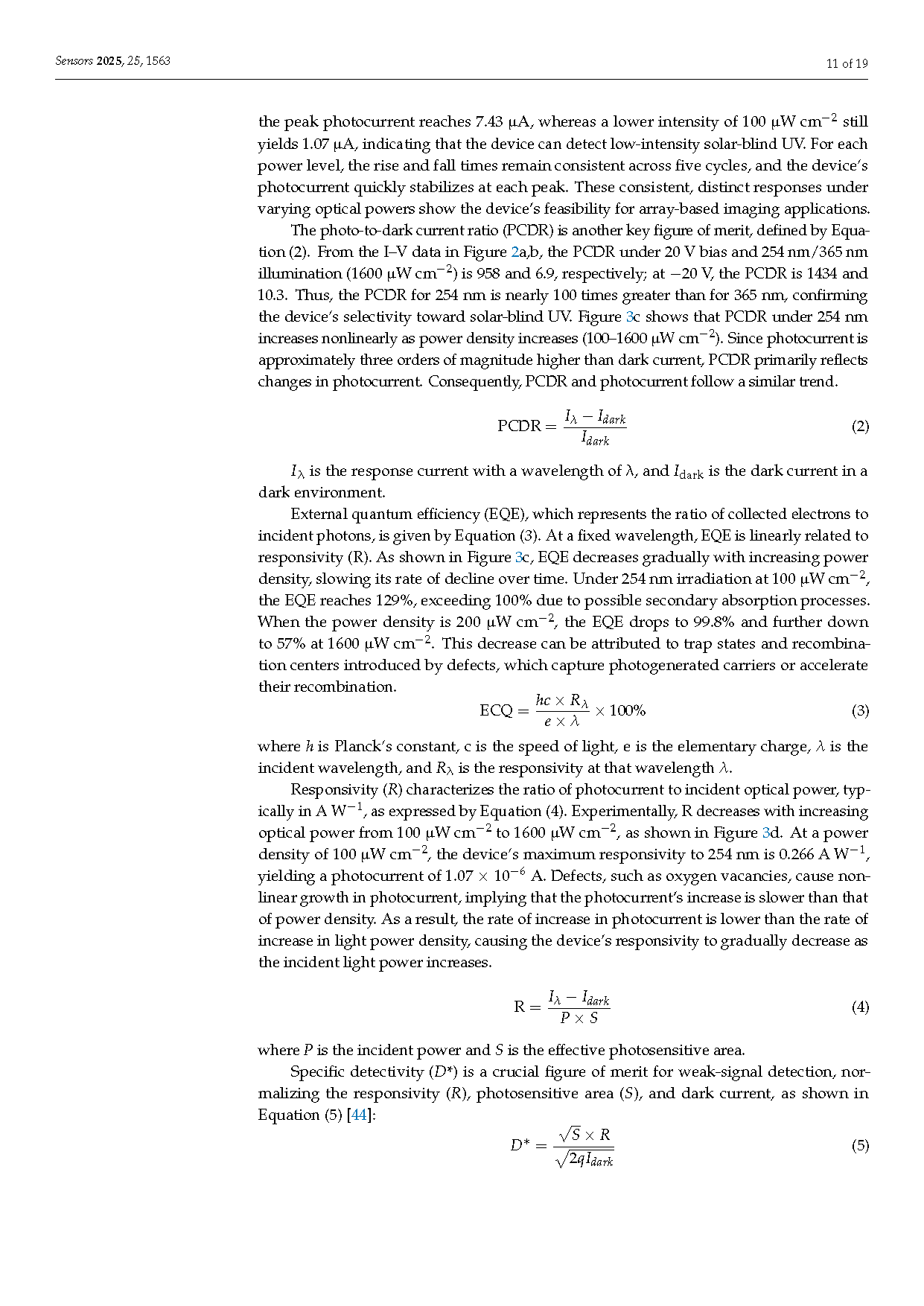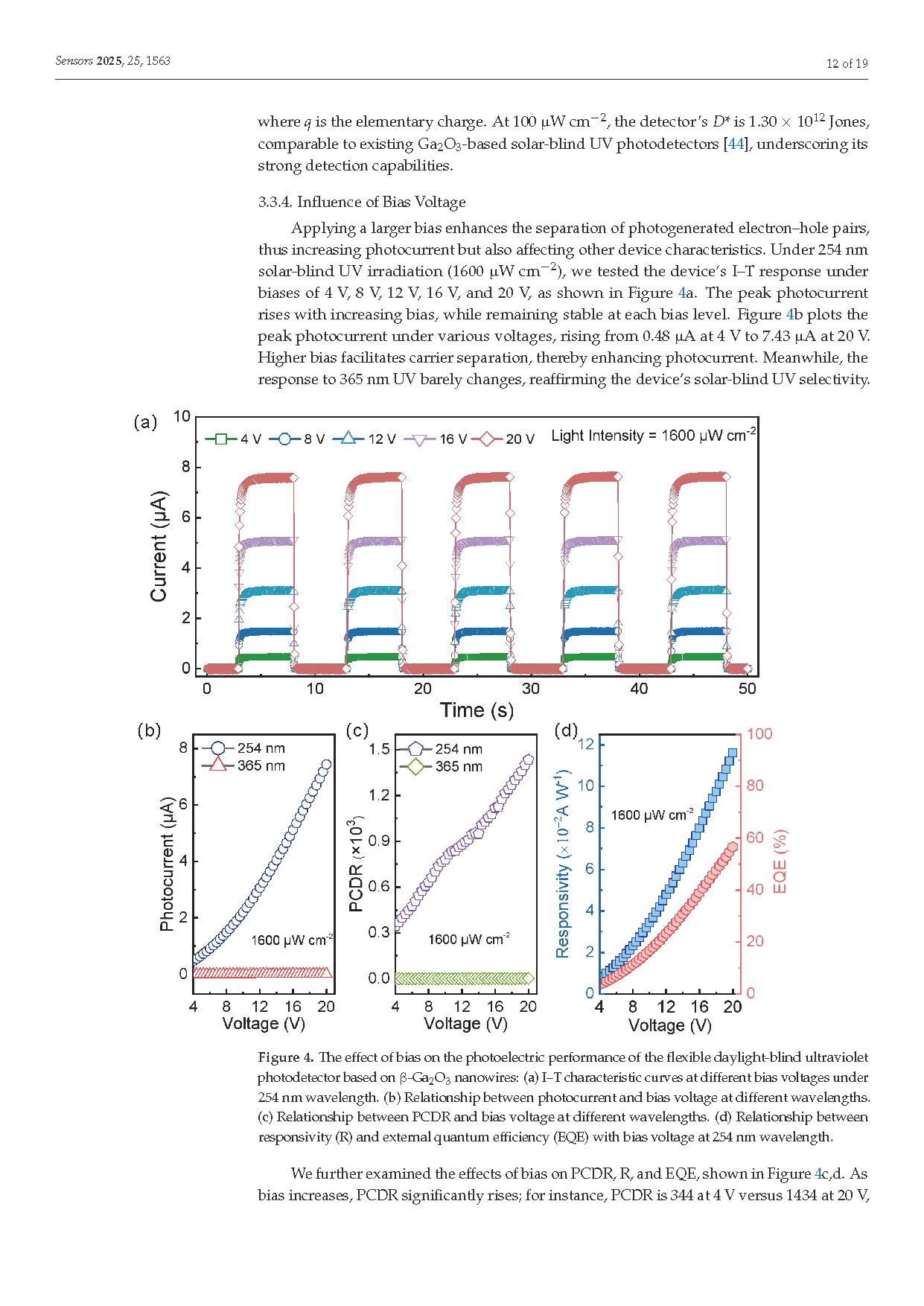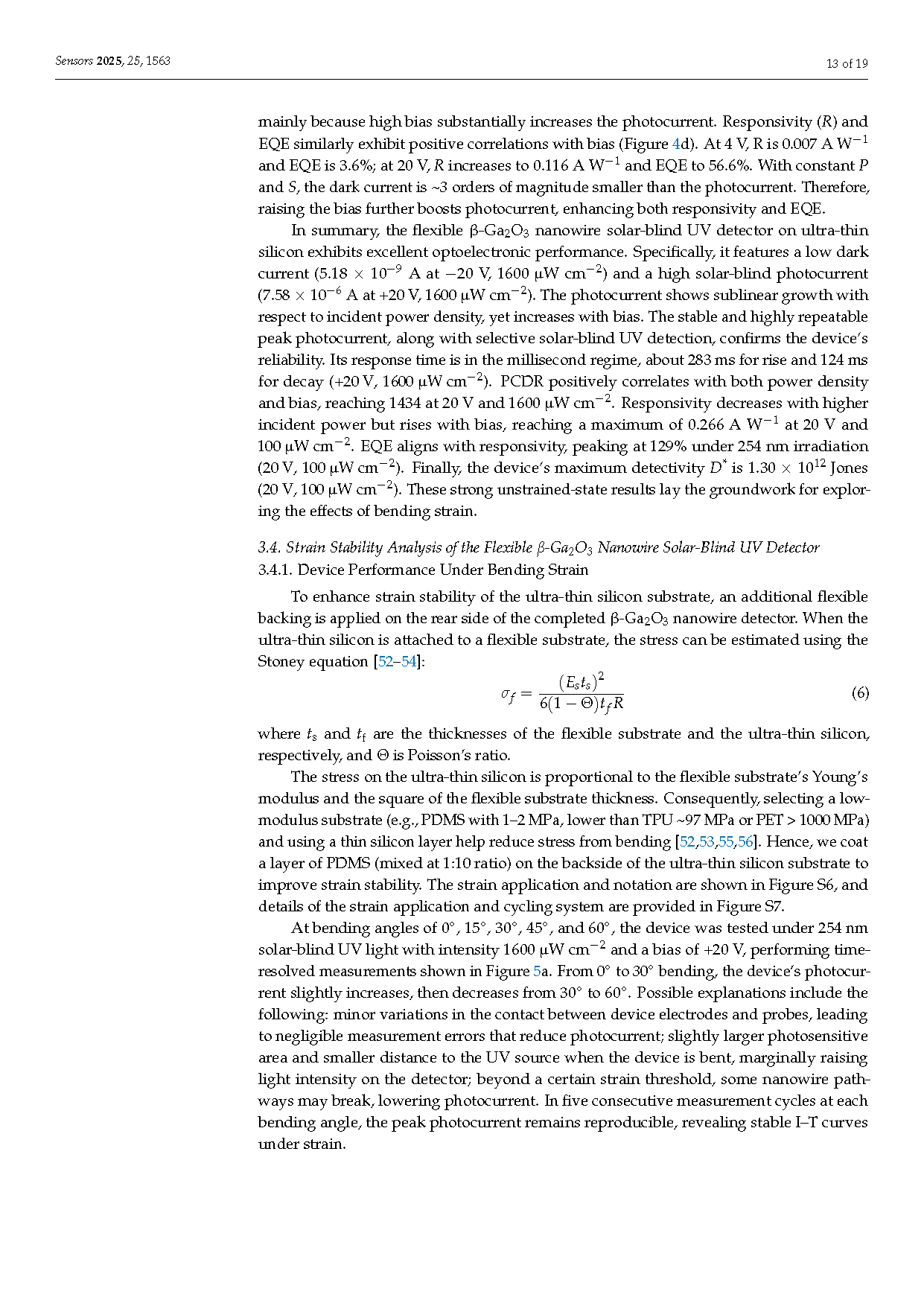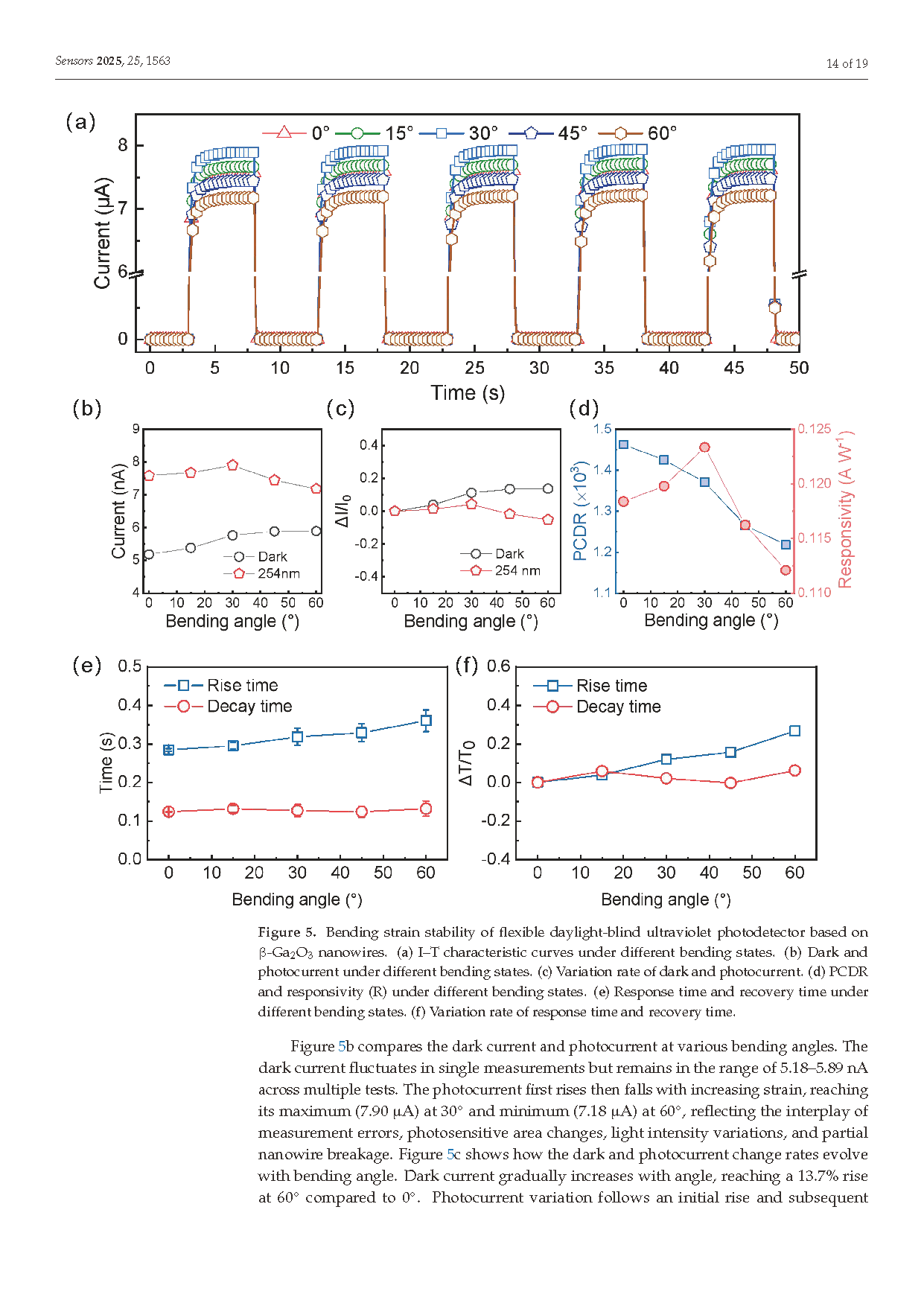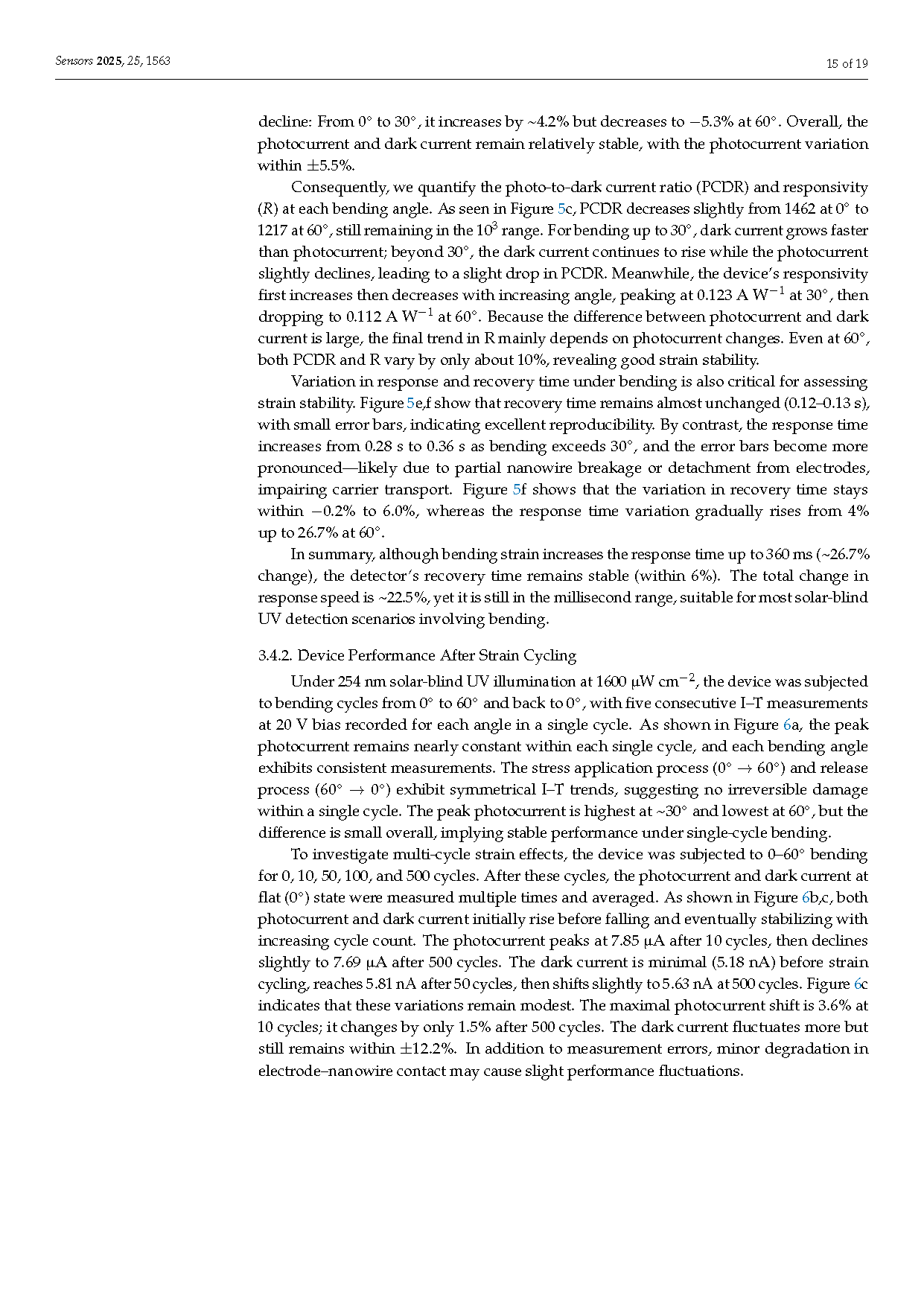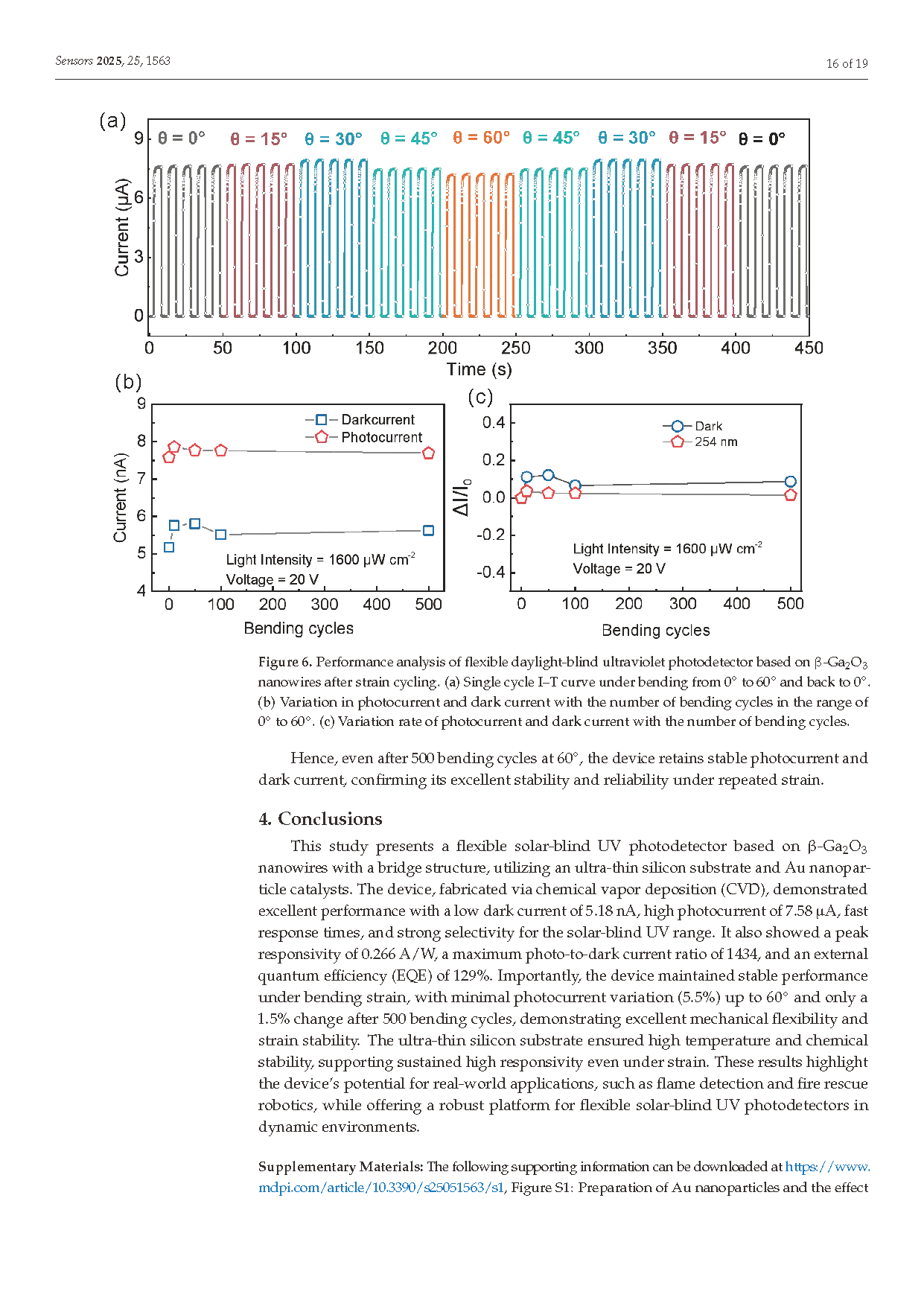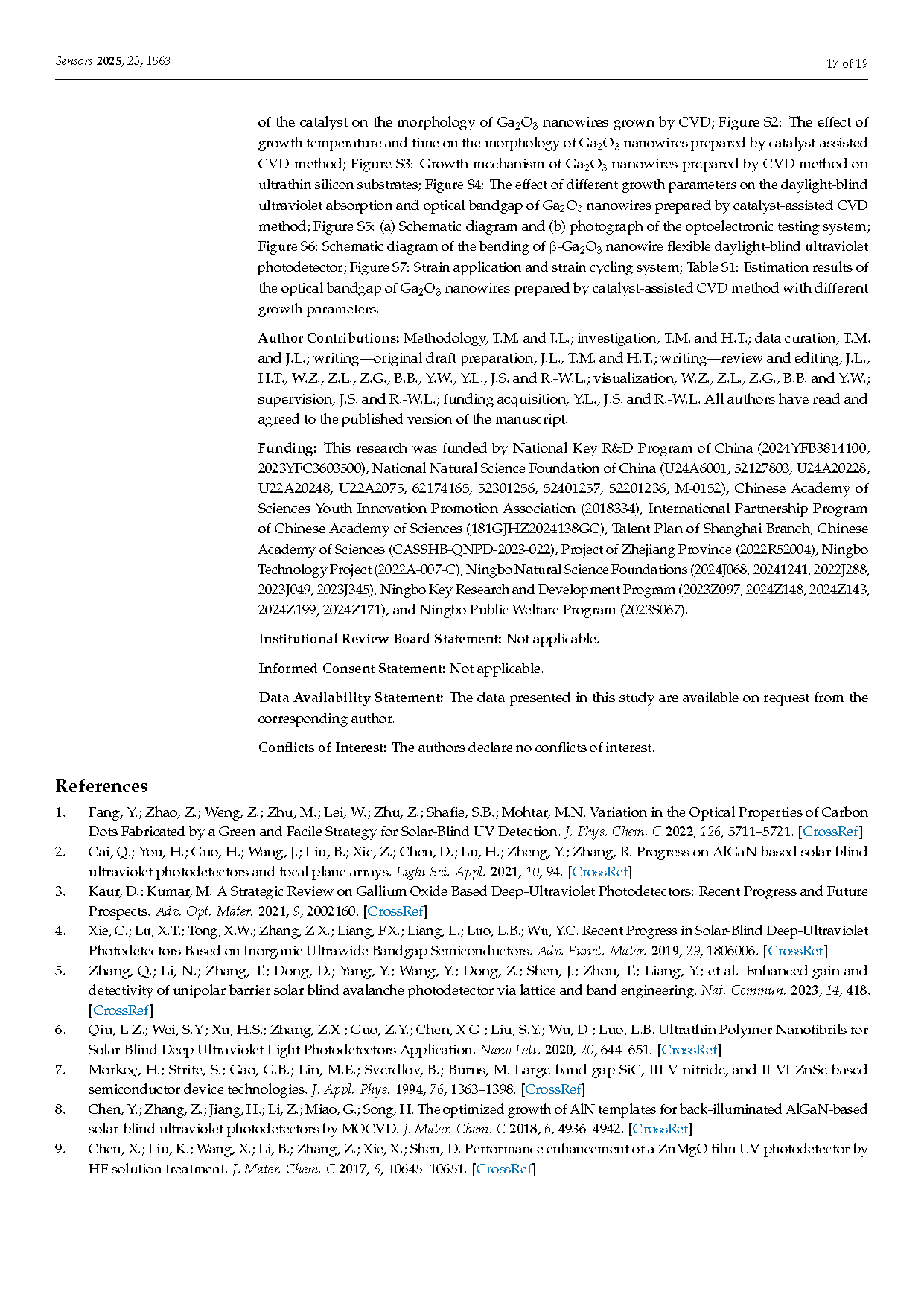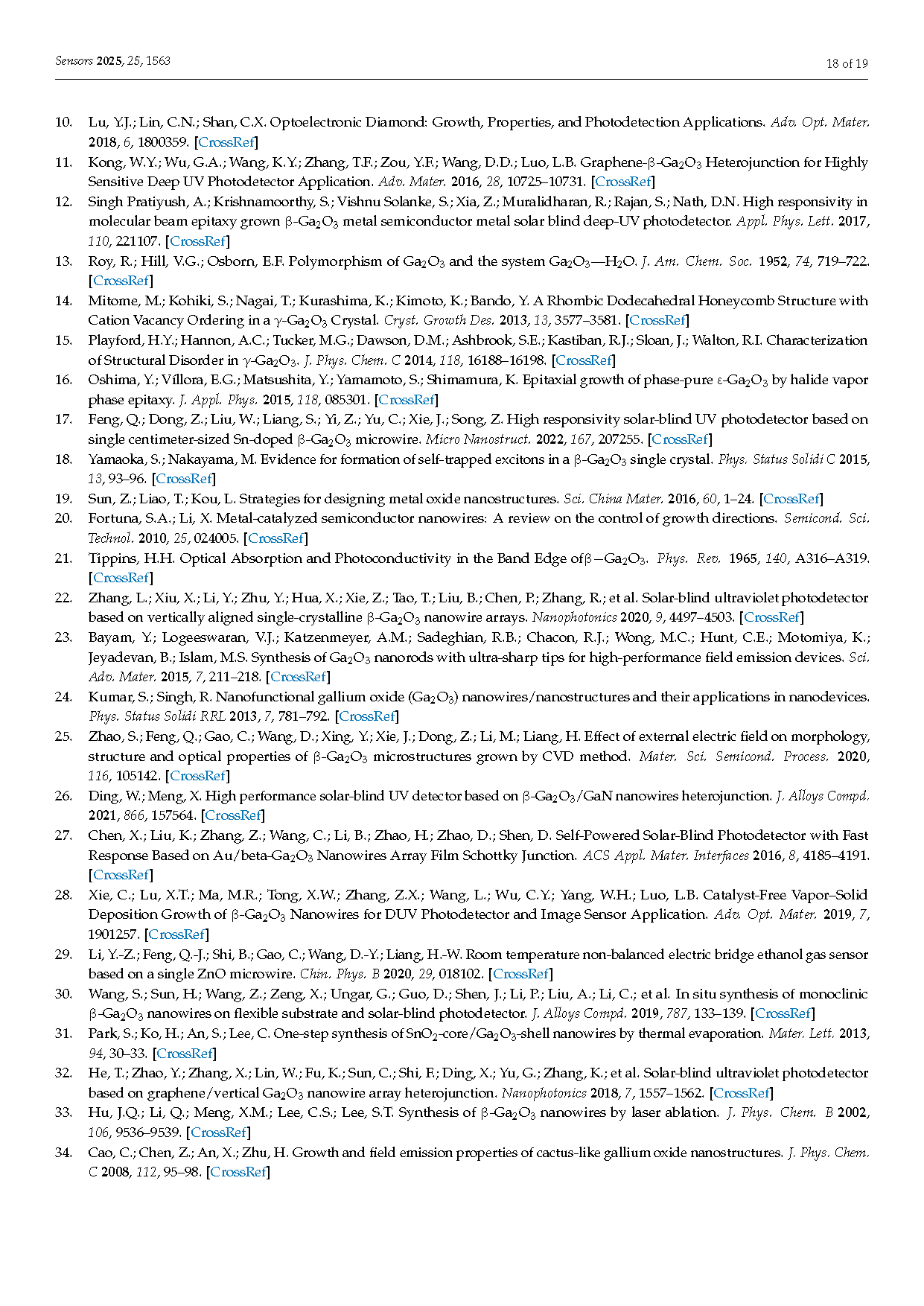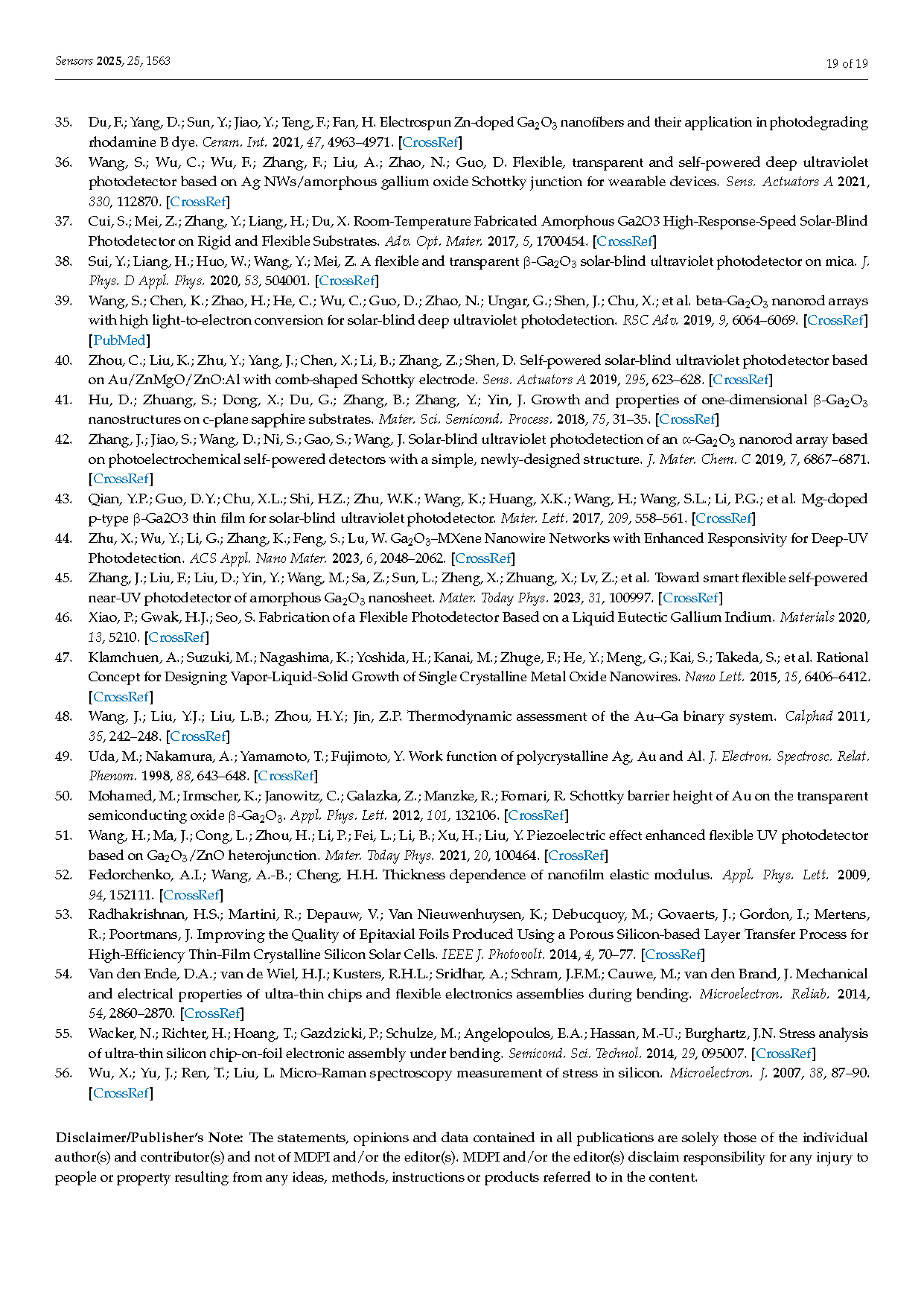

【Domestic Papers】Chinese Academy of Sciences --- Flexible Solar-Blind Ultraviolet Photodetector Based on β-Ga₂O₃ Nanowire Channel Bridge Structure: Combining High Responsivity and Strain Stability
日期:2025-03-27阅读:517
Researchers from the Chinese Academy of Sciences have published a dissertation titled "Flexible Solar-Blind Ultraviolet Photodetector Based on β-Ga2O3 Nanowire Channel Bridge Structure: Combining High Responsivity and Strain Stability" in Sensors.
Abstract
Solar-blind ultraviolet photodetectors are gaining attention for their high signal-to-noise ratio and strong anti-interference capabilities. With the rising demand for applications in high-strain environments, such as fire rescue robots and smart firefighting suits, a flexible photodetector that maintains stable performance under bending strain is needed. Current devices struggle to balance strain cycle stability and responsivity. This paper presents a β-Ga2O3 nanowire photodetector on a flexible ultra-thin silicon substrate, fabricated using microchannel engraving and chemical vapor deposition. The device achieves a responsivity of 266 mA W−1 without strain, with less than 5.5% variation in photogenerated current under bending strain (0–60°), and a response time of 360 ms. After 500 cycles of 60° bending, the photogenerated current changes by only 1.5%, demonstrating excellent stability and responsivity, with broad application potential in flame detection and biological sensing.

Figure 1. Design principle and fabrication process of flexible ultraviolet photodetector based on β-Ga2O3 nanowire trench-bridge structure. (a) The application of the photodetector in the working scenario of the fire rescue robot electronic skin and the flame signal detection mechanism. (b) Fabrication process of flexible ultraviolet photodetector based on β-Ga2O3 nanowire trench-bridge structure. (c) Optical microscope image of the flexible daylight-blind ultraviolet photodetector, and (d) SEM image. (e) Performance comparison of device responsivity and photocurrent of the flexible daylight-blind ultraviolet photodetector.
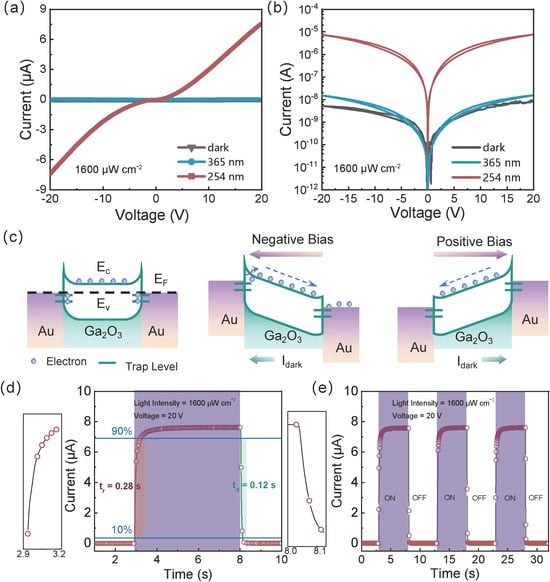
Figure 2. Photoelectric performance of flexible daylight-blind ultraviolet photodetector based on β-Ga2O3 nanowires on ultrathin silicon substrate. The I–V characteristic curves of the detector under dark, 254 nm, and 365 nm illumination in (a) linear scale and (b) logarithmic scale. (c) Schematic energy band diagrams of the device under different biases: (left) no bias, (middle) negative bias, and (right) positive bias. (d) I–T characteristic curve for a single cycle under 254 nm illumination on/off and (e) I–T characteristic cycle curve for three cycles.
DOI:
doi.org/10.3390/s25051563
